Boosting Ecommerce Conversions with Evidence-Based Strategies
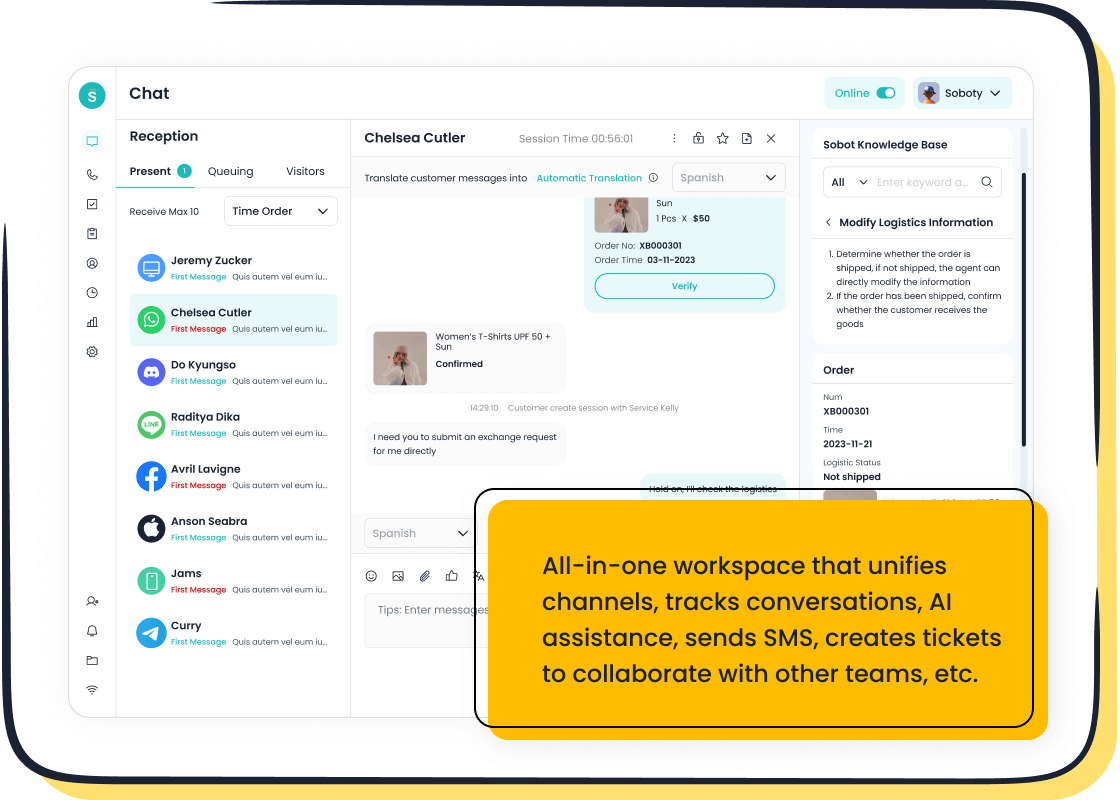
Optimizing ecommerce conversion rates requires more than guesswork; it demands data-driven ecommerce strategies to make informed decisions. Numbers tell a compelling story. For example, the average conversion rate for ecommerce businesses is 1.81%, meaning fewer than two out of every 100 visitors make a purchase. Meanwhile, 70.32% of shoppers abandon their carts, highlighting the urgency to enhance customer experience and regain lost opportunities. Real-time data analysis allows you to identify patterns, build personalized marketing campaigns, and earn customer trust. By leveraging tools like Sobot, you can learn how to increase ecommerce conversion rate effectively, turning high-intent traffic into loyal buyers through actionable insights.
Understanding Ecommerce Conversion Rates
What is an Ecommerce Conversion Rate
An ecommerce conversion rate measures how effectively your online store turns visitors into paying customers. It provides a clear picture of your store's performance. To calculate it, follow these steps:
- Count the total number of purchases.
- Determine the total number of visitors.
- Use this formula: (Number of purchases ÷ Number of visitors) × 100.
For example, if your store has 500 visitors and 100 purchases, the conversion rate is 20%. This metric helps you understand how well your website engages visitors and encourages them to complete transactions.
| Definition | Calculation Method |
|---|---|
| The conversion rate refers to the percentage of website visitors that become paying customers. | To calculate the conversion rate, divide the total number of conversions by the total number of visitors and multiply by 100. For example, if there are 500 visitors and 100 sales, the conversion rate is 100 ÷ 500 × 100 = 20%. |
Why Ecommerce Conversion Rates Matter
Your ecommerce conversion rate directly impacts your business success. A higher rate means more visitors are becoming customers, which leads to increased revenue. On average, ecommerce conversion rates range from 2.5% to 3%. This figure highlights how well your store performs compared to competitors.
Page speed also plays a critical role. Research shows that pages loading in 2.4 seconds achieve an average conversion rate of 1.9%. If loading time increases to 4.2 seconds, the rate drops below 1%. Faster websites not only improve user experience but also boost conversions. For B2C ecommerce, sites loading in one second have conversion rates 2.5 times higher than those taking five seconds.
Industry Benchmarks for Ecommerce Conversion Rates
Understanding industry benchmarks helps you set realistic goals for your ecommerce store. Conversion rates vary across sectors. Here’s a breakdown:
| Industry | Conversion Rate (%) |
|---|---|
| Fashion eCommerce | 1.5-2.5 |
| Health and Beauty | 3.0-4.5 |
| Electronics | 1.4-2.6 |
| Food and Beverage | 3.5-5.0 |
| Digital Products/Services | 5.0-8.0 |
These benchmarks provide a reference point for evaluating your store's performance. If your rate falls below the average for your industry, it’s time to explore strategies on how to increase ecommerce conversion rate.
Scientific Methods for Ecommerce Conversion Optimization
Setting Goals and KPIs for Conversion Rate Improvement
To improve your ecommerce conversion rate, you need clear goals and measurable KPIs (Key Performance Indicators). Goals provide direction, while KPIs help you track progress. For example, if your goal is to increase sales, a relevant KPI could be the percentage of visitors who complete a purchase. Start by identifying specific areas for improvement, such as reducing cart abandonment or increasing average order value.
A case study from Ixigo highlights the importance of setting defined goals. They faced low email engagement despite having rich behavioral data. By implementing KPIs and optimizing email campaigns through A/B testing, they achieved a 54% increase in open rates and a 3.5% lift in click-through rates. This demonstrates how aligning goals with KPIs can lead to measurable success.

When setting your KPIs, focus on metrics like conversion rate, bounce rate, and customer lifetime value. Tools like Sobot Live Chat can help you monitor these metrics in real time. Its built-in analytics evaluates over 150 indicators, providing actionable insights to refine your strategies.
Using Data Analysis to Identify Bottlenecks
Data analysis is crucial for identifying bottlenecks in your ecommerce funnel. Bottlenecks are points where users drop off before completing a desired action, such as making a purchase. By analyzing data, you can pinpoint these problem areas and take corrective action.
Several methods can help you uncover bottlenecks:
| Method | Description |
|---|---|
| Funnel Visualization | Use tools like Google Analytics to see where users drop off in the buying process. |
| Conversion Rate Analysis | Calculate conversion rates at each stage to identify weak points. |
| Segmentation | Group users by behavior or demographics to see which segments perform better. |
| High Drop-Off Points | Focus on stages with unusually high drop-offs to find potential issues. |
| Form Abandonment | Analyze why users abandon forms, such as complexity or length. |
| Page Load Time Assessment | Check page load times, as slow speeds can frustrate users and lead to drop-offs. |
| Heatmaps | Study user interactions on your site to optimize layouts and navigation. |
| Exit Surveys | Collect feedback from users who leave without converting to understand their reasons. |
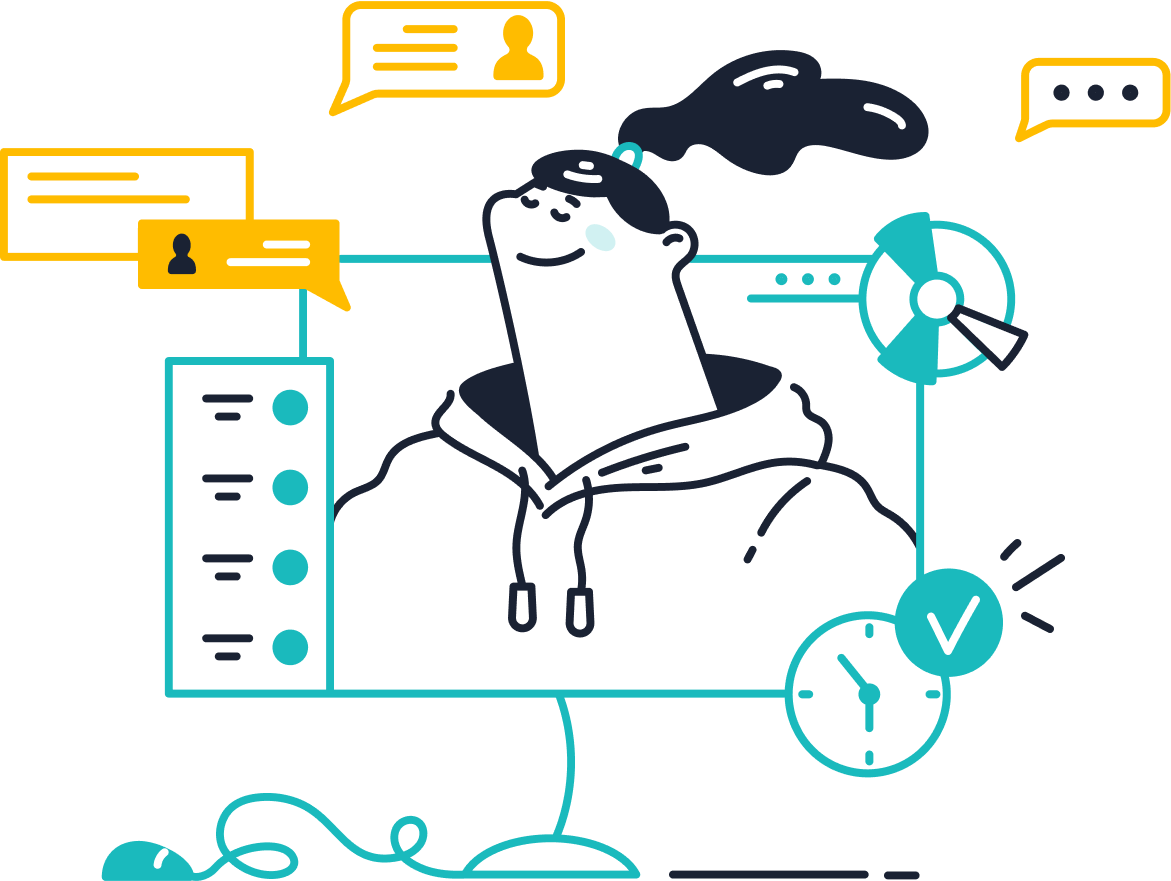
For example, if your data shows a high drop-off rate during checkout, you might simplify the process by reducing the number of steps. Sobot Live Chat can assist by offering real-time support during critical stages, helping to reduce abandonment rates.
Testing Hypotheses with A/B Testing
A/B testing is a scientific method that allows you to test changes on your website to see what works best. It involves creating two versions of a webpage or element—Version A (control) and Version B (variation)—and comparing their performance. This method helps you make data-driven decisions to improve your ecommerce conversion optimization.
Follow these steps for effective A/B testing:
- Identify a problem area, such as a low conversion rate on a product page.
- Formulate a hypothesis. For instance, "Adding customer reviews will increase conversions."
- Create two versions of the page: one with reviews (Version B) and one without (Version A).
- Split your audience randomly and direct them to either version.
- Analyze the results to see which version performs better.
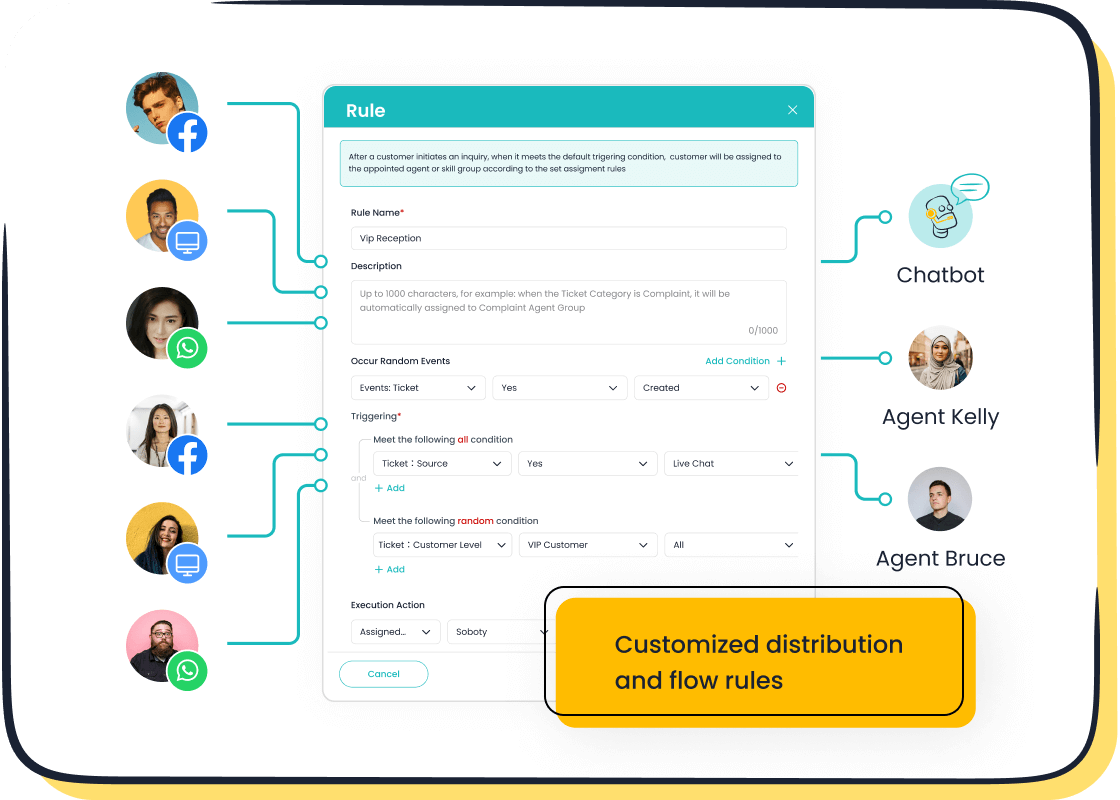
For example, adding urgency tactics like "Only 3 left in stock!" can create a fear of missing out, encouraging quicker purchases. Similarly, high-quality product photos and effective CTAs (calls to action) can significantly boost conversions. Sobot Live Chat supports A/B testing by providing detailed analytics and customer behavior analysis, helping you understand what resonates with your audience.
By continuously testing and refining your strategies, you can achieve sustainable growth in your ecommerce conversion rate.
Implementing Changes and Measuring Results
Once you’ve identified bottlenecks and tested hypotheses through a/b testing, the next step is to implement changes and measure their impact. This phase is crucial for ensuring that your ecommerce conversion optimization efforts yield tangible results. Start by rolling out the changes that performed best during testing. For example, if a simplified checkout process reduced cart abandonment during testing, apply it across your site.
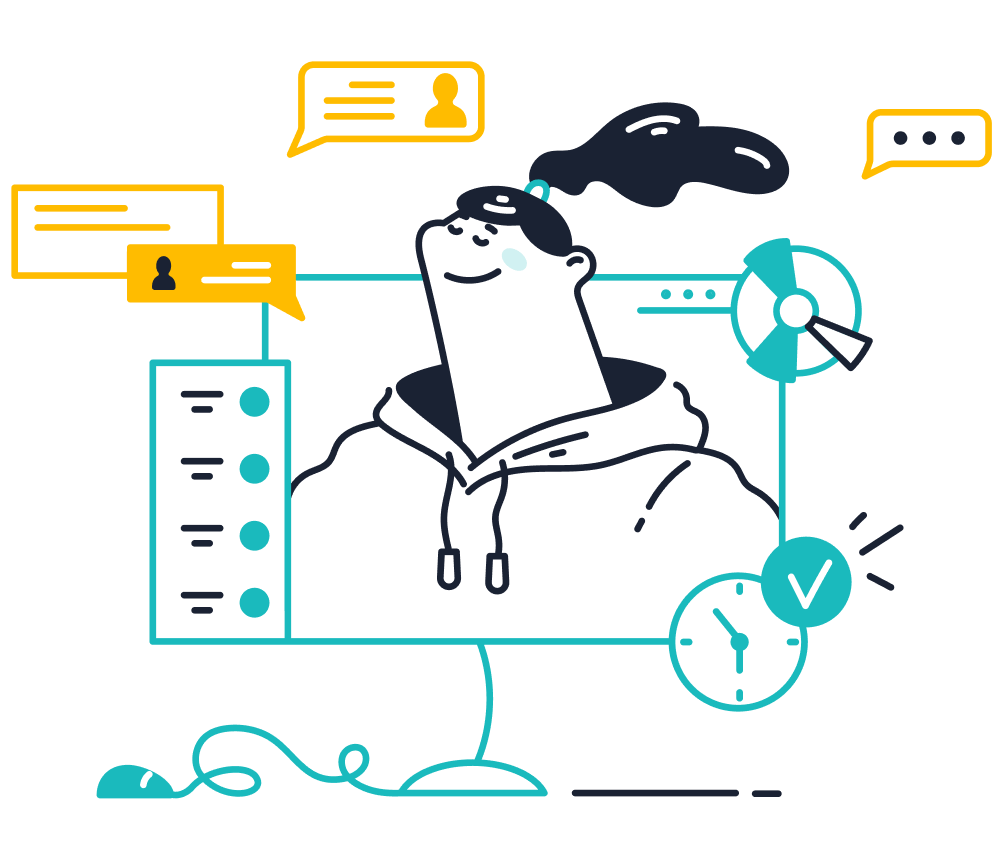
To measure the success of these changes, track key metrics that reflect user behavior and engagement. These include bounce rate, click-through rate, abandonment rate, and session duration. Each metric provides valuable insights into how users interact with your site. For instance, a lower bounce rate indicates that visitors are staying longer and exploring more pages. Use tools like Sobot Live Chat’s built-in analytics to monitor these metrics in real time. Its ability to evaluate over 150 indicators ensures you have a comprehensive view of your site’s performance.
| Metric | Description |
|---|---|
| Bounce rate | The percentage of visitors who leave the site without further interaction. |
| Click-through rate | The percentage of visitors who click on a displayed link. |
| Abandonment rate | The percentage of users who abandon tasks like form filling or payment processes. |
| Scroll depth | The point at which users stop scrolling through a page's content. |
| Session duration | The average time users spend on the website or page. |
| Retention rate | The percentage of users who return to the site after leaving. |
Conversion rate optimization is not just about making changes; it’s about understanding their impact. For example, if your ecommerce conversion rate improves after implementing a new feature, it confirms that the change resonated with your audience. This process replaces assumptions with data-backed decisions, ensuring that every adjustment contributes to your overall goals.
Tip: Always document the changes you implement and the results they produce. This practice helps you build a repository of strategies that work, saving time and resources in future optimization efforts.
Iterative Testing for Continuous Improvement
Ecommerce conversion optimization is not a one-time effort. It requires ongoing testing and refinement to adapt to changing customer behaviors and market trends. Iterative testing involves making small, incremental changes and evaluating their impact over time. This approach allows you to continuously improve your ecommerce conversion rate by learning from both successes and failures.
Start by revisiting areas that still show room for improvement. For example, if your data reveals that users frequently abandon their carts, consider testing additional strategies like offering free shipping or displaying trust badges. Each test should follow the same structured process: identify the issue, form a hypothesis, test a variation, and analyze the results.
- Higher conversion rates result in more customers completing desired actions, leading to increased sales and revenue.
- Even minor improvements in conversion rates can significantly enhance overall business performance.
A well-designed user experience directly impacts conversion rates. By iterating on your UX strategy, you can identify and eliminate barriers to conversion, streamline the user journey, and enhance the overall shopping experience. For instance, optimizing navigation or improving mobile usability can make it easier for users to find what they need, increasing the likelihood of a purchase.
Continuous improvement also involves leveraging customer insights. Tools like Sobot Live Chat provide valuable data on user behavior, helping you understand what your audience values most. For example, if users frequently ask about product availability, consider adding real-time stock updates to your site. This small change could lead to a significant boost in your ecommerce conversion rate.
Note: Iterative testing is not just about fixing problems; it’s about discovering opportunities. By experimenting with new ideas and analyzing their impact, you can uncover strategies that drive sustainable growth.
Actionable Strategies to Increase Ecommerce Conversion Rates
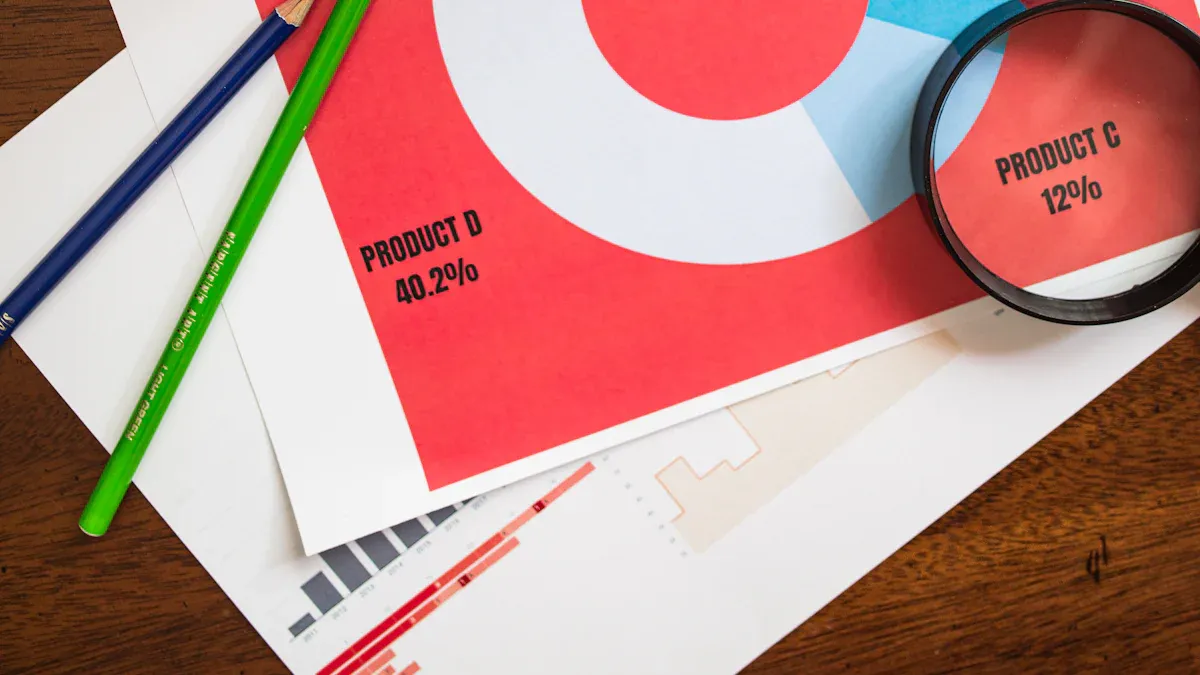
Crafting a Value Proposition That Converts
Your value proposition is the cornerstone of your ecommerce success. It tells your customers why they should choose your product over competitors. A strong value proposition addresses their pain points, highlights the benefits of your product, and builds trust. For example, if you sell eco-friendly products, emphasize how your offerings help customers reduce their carbon footprint.
To craft a compelling value proposition:
- Identify Pain Points: Understand the challenges your customers face and how your product solves them.
- Conduct Market Research: Study industry trends and buyer behavior to position your product effectively.
- Leverage Customer Feedback: Use reviews and testimonials to refine your messaging and align it with customer expectations.
Consider this: 98% of web visitors leave without taking action, often because they don’t trust the brand. Displaying customer reviews prominently can help build credibility. In fact, 9 out of 10 users rely on reviews to evaluate products. Tools like Sobot Live Chat can assist by gathering real-time feedback and enabling personalized engagement, ensuring your value proposition resonates with high-intent visitors.
Optimizing the Checkout Process for Seamless Transactions
A smooth checkout process is critical for reducing cart abandonment and improving your ecommerce conversion rate. Customers often abandon their carts due to hidden fees, lengthy forms, or unclear policies. Simplifying this process can significantly enhance their experience and boost conversions.
Here are some strategies to optimize your checkout:
- Limit Input Options: Reduce the number of fields customers need to fill out.
- Communicate Clearly: Display shipping fees and return policies upfront to avoid surprises.
- Offer Multiple Payment Options: Cater to diverse customer preferences by including popular payment methods.
- Implement Abandoned Cart Strategies: Send follow-up emails with direct checkout links or personalized offers to encourage completion.
For example, monitoring analytics and A/B testing different checkout elements can reveal what works best. Sobot Live Chat can provide real-time support during checkout, addressing customer concerns instantly and reducing drop-offs. By simplifying the process and offering personalized assistance, you can turn hesitant shoppers into loyal buyers.
Enhancing Mobile Usability for On-the-Go Shoppers
Mobile commerce is on the rise, with more customers shopping on their smartphones than ever before. A mobile-friendly website isn’t optional; it’s essential for ecommerce conversion optimization. Poor mobile usability can frustrate users and drive them away, while a seamless experience can significantly boost conversions.
Consider these strategies to enhance mobile usability:
- Optimize Page Speed: Ensure your site loads quickly on mobile devices.
- Simplify Navigation: Use clear menus and intuitive layouts to help users find what they need.
- Design for Touch: Make buttons and links easy to tap, even on smaller screens.
- Leverage Mobile-Specific Features: Include features like click-to-call or location-based personalization to enhance engagement.
Real-world examples highlight the impact of mobile optimization. Walmart Canada achieved a 98% improvement in conversions by focusing on speed and security in their native app. Similarly, Scandiweb’s client saw a 92% increase after a mobile-first redesign.
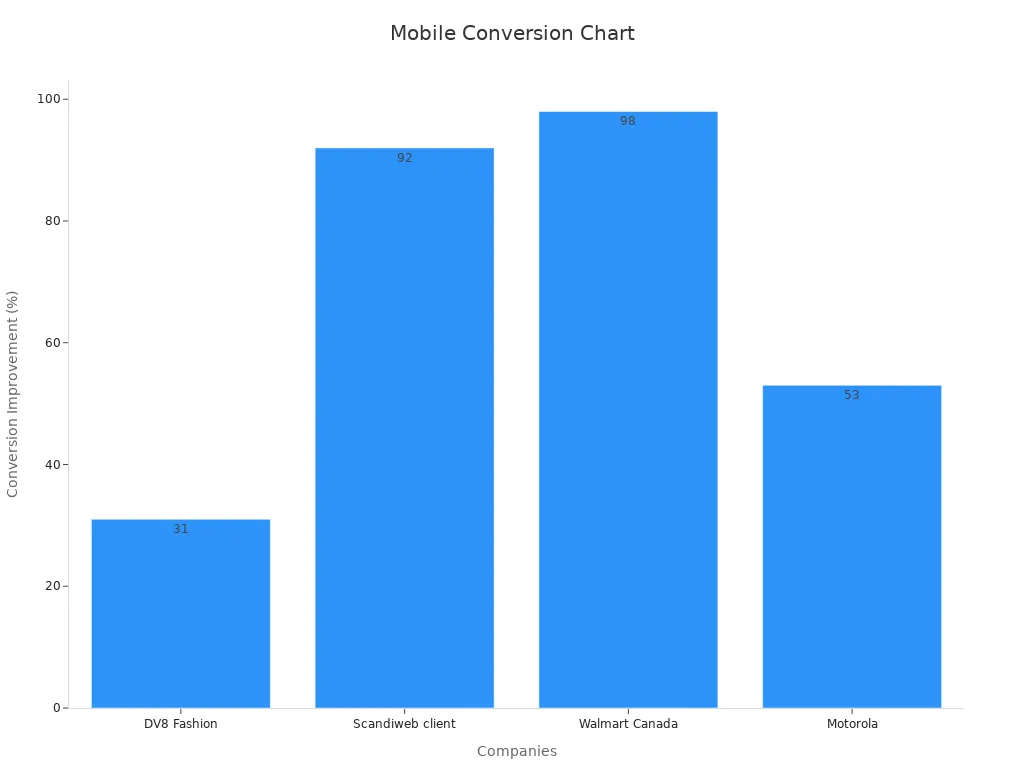
Sobot Live Chat supports mobile platforms, ensuring you can engage with customers seamlessly across devices. Its auto-translation and rich messaging features make it easier to connect with a global audience, enhancing their shopping experience and driving conversions.
Improving Website Speed and Performance
Website speed plays a critical role in shaping your ecommerce success. A slow-loading site frustrates visitors, leading to higher bounce rates and lower conversions. On the other hand, faster websites create a seamless shopping experience, encouraging users to stay longer and complete purchases.
To improve your website speed, focus on these strategies:
- Optimize Images: Compress images without compromising quality to reduce load times.
- Enable Browser Caching: Store static files locally on users' devices to speed up repeat visits.
- Minimize HTTP Requests: Combine CSS and JavaScript files to reduce server requests.
- Use a Content Delivery Network (CDN): Distribute content across multiple servers to ensure faster delivery.
- Prioritize Core Web Vitals: Focus on metrics like Largest Contentful Paint (LCP) and First Input Delay (FID) to enhance user experience.
The impact of improving website speed is undeniable. A 0.1-second improvement in loading time can increase conversions for retail brands by 8.4%. Vodafone achieved an 8% sales boost after optimizing Core Web Vitals, while eBay saw a 0.5% rise in "Add to Cart" clicks for every 0.1-second improvement. These results highlight the direct link between speed and ecommerce conversion rate.
| Metric | Improvement |
|---|---|
| Revenue per visitor | 53.37% increase |
| Conversion rate | 33.13% increase |
| Average order value | 15.20% increase |
| Average time spent | 9.99% increase |
| Exit rate | 35.12% reduction |
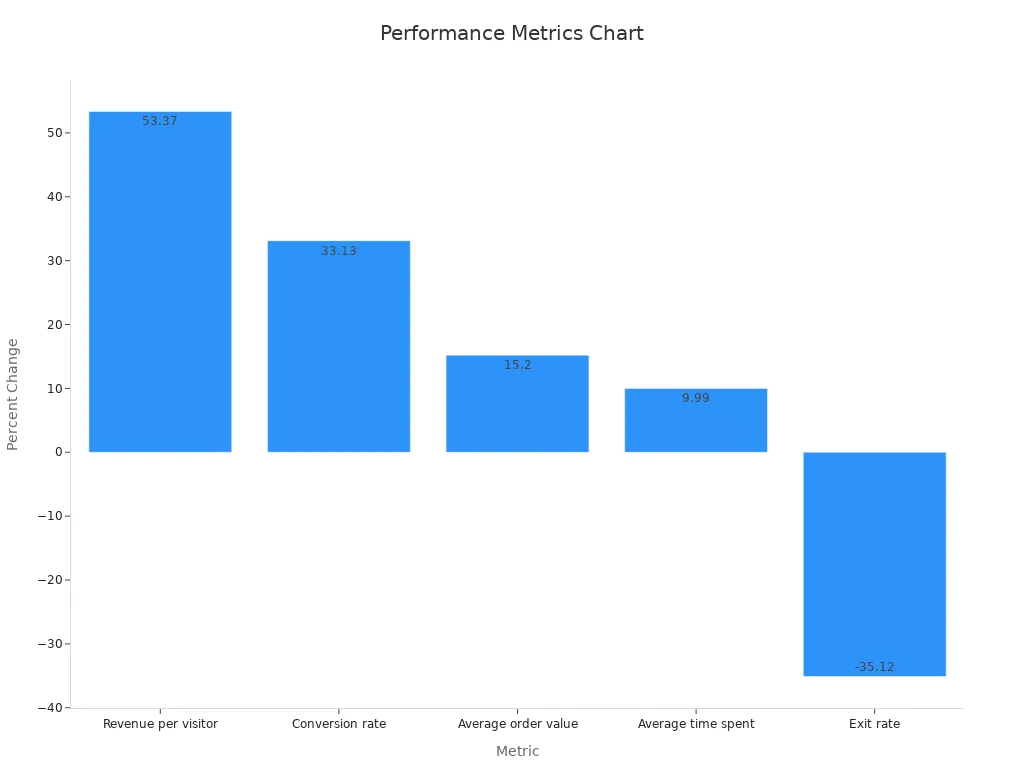
By implementing these strategies, you can create a faster, more engaging shopping experience that drives higher conversions.
Tip: Use tools like Google PageSpeed Insights to identify specific areas for improvement and track your progress over time.
Refining Navigation and User Experience
Navigation serves as the backbone of your ecommerce site. When visitors can easily find what they need, they are more likely to stay, explore, and convert. Poor navigation, however, leads to frustration and higher exit rates.
To refine your navigation and improve user experience, consider these steps:
- Simplify Menus: Limit the number of menu items to avoid overwhelming users.
- Use Clear Labels: Ensure category names are intuitive and align with user intent.
- Add a Search Bar: Include a prominent search feature to help users locate products quickly.
- Implement Breadcrumbs: Provide a clear path back to previous pages to enhance usability.
- Optimize for Mobile: Ensure navigation elements are easy to tap and scroll on smaller screens.
Research confirms the importance of intuitive navigation. Main Street Marketing found that clear, well-organized navigation keeps visitors engaged and guides them toward conversion points. AB Digital reported that easy navigation is a top priority for online shoppers, leading to improved sales for retailers who refine their navigation systems.
| Source | Findings |
|---|---|
| Main Street Marketing | Clear, well-organized navigation enhances usability, keeping visitors engaged and guiding them toward conversion points. |
| AB Digital | Easy navigation is a top priority for online shoppers, leading to improved sales for retailers who refine their navigation. |
| Zigpoll | Intuitive navigation systems lead to higher engagement and more purchases by aligning categorization with user intent. |
By focusing on navigation, you can create a user-friendly experience that encourages visitors to explore your site and complete their purchases.
Note: Regularly test your navigation with real users to identify pain points and make necessary adjustments.
Optimizing Product Pages for Higher Engagement
Your product pages act as the final step in converting visitors into customers. A well-optimized product page not only informs but also persuades users to take action. To maximize engagement and boost conversions, focus on these elements:
- High-Quality Images: Use clear, professional photos that showcase your product from multiple angles.
- Compelling Descriptions: Highlight key features and benefits in a way that resonates with your audience.
- Customer Reviews: Display testimonials and ratings to build trust and credibility.
- Clear Call-to-Action (CTA): Use action-oriented language like "Add to Cart" or "Buy Now" to encourage clicks.
- Mobile Optimization: Ensure product pages load quickly and display correctly on all devices.
Products with high-quality images can achieve a 30% higher conversion rate. Those featuring multiple images see up to a 58% increase, while compelling descriptions can boost conversion rates by as much as 40%. These statistics underscore the importance of investing in your product pages.
Example: Adding a "Zoom-In" feature for product images can enhance user interaction, making it easier for shoppers to examine details and feel confident in their purchase.
By optimizing your product pages, you can create a personalized shopping experience that drives higher engagement and increases your ecommerce conversion rate.

Leveraging Sobot Live Chat for Real-Time Customer Support
Real-time customer support plays a crucial role in improving your ecommerce conversion rate. When customers receive immediate assistance, they feel valued and are more likely to complete their purchases. Sobot Live Chat offers a powerful solution to meet this need, enabling you to engage with visitors instantly and guide them through their buying journey.
Why Real-Time Support Matters
Imagine a customer browsing your website, unsure about product details or shipping policies. Without quick answers, they might leave and never return. Real-time support bridges this gap by addressing concerns immediately. Research shows that 79% of customers prefer live chat because it provides instant responses. This preference highlights the importance of tools like Sobot Live Chat in creating a seamless shopping experience.
Sobot Live Chat ensures no customer query goes unanswered. Its omnichannel support allows you to connect with users across platforms like WhatsApp, Facebook, and Instagram. This feature ensures you meet customers where they are, increasing engagement and reducing missed opportunities.
The Impact of Sobot Live Chat on Conversions
Sobot Live Chat doesn’t just answer questions; it drives measurable results. Businesses using this tool have reported significant improvements in key metrics:
| Metric | Result |
|---|---|
| Customer questions answered | 22.2% |
| Customer satisfaction score (CSAT) | 97% |
| Sign-off rate | Increased by 35% |
| COD collection rate | Increased by 40% |
| Correct answers from AI platform | Over 80% |
| Customer satisfaction with service | Over 95% |
These numbers demonstrate how Sobot Live Chat enhances customer interactions. For example, a 35% increase in sign-off rates means more customers complete their transactions after receiving support. Similarly, a 40% boost in cash-on-delivery (COD) collection rates shows how effective communication can directly impact revenue.
Key Features That Drive Success
Sobot Live Chat stands out because of its advanced features designed to improve your ecommerce conversion rate. Here’s how it helps:
- AI-Powered Assistance: The platform uses AI to provide accurate answers, with over 80% of responses being correct. This reduces the workload on your team and ensures customers get the information they need.
- Built-In Analytics: Sobot evaluates over 150 indicators, giving you insights into customer behavior. These analytics help you refine your strategies and improve service quality.
- Omnichannel Support: Engage with customers across multiple platforms without switching tools. This unified approach ensures consistent communication and builds trust.
- Customizable Widgets: Match the chat interface to your brand’s style, creating a cohesive experience for visitors.
Real-Life Success Stories
Businesses across industries have seen remarkable results with Sobot Live Chat. For instance, Opay, a financial service platform, used Sobot to streamline customer interactions. The result? A 17% increase in conversion rates and a 90% customer satisfaction score. These achievements highlight the tool’s ability to transform customer support into a revenue-driving asset.
Tip: Use Sobot Live Chat’s real-time support during critical stages like checkout. Addressing last-minute concerns can significantly reduce cart abandonment and boost your ecommerce conversion rate.
Leveraging Data-Driven Tools for Ecommerce Conversion Optimization

Using Analytics Platforms to Track Customer Behavior
Analytics platforms provide valuable insights into how customers interact with your ecommerce site. By tracking behavior, you can uncover patterns that help optimize your store for better conversions. For example, analyzing browsing habits reveals what customers like and dislike, allowing you to refine your offerings. Behavioral flow data highlights which pages perform well and which ones need improvement. If customers abandon their carts frequently, analytics can pinpoint the reasons, enabling you to address issues like hidden fees or complex checkout processes.
Tracking customer behavior also helps you understand purchasing patterns. This knowledge allows you to create personalized shopping experiences that resonate with your audience. Platforms like Sobot Live Chat offer built-in analytics that evaluate over 150 indicators, providing actionable data to improve your strategies. By leveraging these insights, you can increase conversions and enhance customer satisfaction.
Implementing Predictive Analytics for Conversion Insights
Predictive analytics uses historical data to forecast future trends, helping you plan for success. It identifies customer behavior patterns and emerging trends, allowing you to adjust strategies quickly. For instance, if data predicts a surge in demand for a specific product, you can allocate resources to meet customer expectations. Businesses that use predictive analytics often see improved return on investment due to better resource allocation.
Personalized interactions are another benefit of predictive analytics. By anticipating customer needs, you can tailor your marketing campaigns and product recommendations. Sobot AI integrates predictive analytics into its platform, enabling businesses to deliver targeted promotions and reduce cart abandonment. This approach enhances the customer experience while driving higher conversion rates.
Harnessing AI and Machine Learning for Personalization
AI and machine learning transform ecommerce by enabling advanced personalization. These technologies analyze contextual factors like location, time, and device to deliver tailored product recommendations. For example, AI can suggest products based on a customer’s browsing history or inferred emotional state. Amazon and Walmart use AI-powered systems to customize shopping journeys, improving user engagement and satisfaction.
Sobot AI employs features like affinity scoring and dynamic filtering to refine recommendations in real time. Pattern recognition identifies customer preferences, ensuring that suggestions align with their needs. These capabilities create a seamless shopping experience that boosts conversions. By leveraging AI, you can offer personalized solutions that make customers feel valued and understood.
Utilizing Sobot Live Chat Analytics for Data-Driven Decisions
Making data-driven decisions is essential for improving your ecommerce conversion rate. Sobot Live Chat provides powerful analytics tools that give you a clear understanding of customer behavior. These insights help you identify trends, optimize strategies, and improve customer satisfaction.
Sobot Live Chat evaluates over 150 indicators, offering a comprehensive view of your website’s performance. For example, you can track metrics like response time, customer satisfaction scores, and the number of resolved queries. These analytics allow you to pinpoint areas where your team excels and where improvements are needed. If customers frequently ask about shipping policies, you can update your website to address this concern proactively.
Real-time analytics also help you respond quickly to customer needs. Imagine a scenario where a product page experiences high traffic but low conversions. Sobot Live Chat’s analytics can reveal why visitors hesitate. Perhaps they need more product details or reassurance about return policies. By addressing these issues immediately, you can turn potential drop-offs into completed purchases.
Another advantage of Sobot Live Chat is its ability to segment customers based on behavior. For instance, you can identify high-value customers and offer them personalized discounts. This targeted approach increases loyalty and boosts sales. Additionally, the platform’s built-in analytics help you measure the success of these strategies, ensuring continuous improvement.
Using Sobot Live Chat analytics, you can make informed decisions that directly impact your bottom line. Whether it’s optimizing your checkout process or enhancing customer support, these tools provide the data you need to succeed.
Tip: Regularly review your analytics to stay ahead of customer expectations. Small adjustments based on data can lead to significant improvements in your ecommerce conversion rate.
The Role of Continuous Testing and Adaptation in Ecommerce Success
Staying Ahead of Market Trends with Data Insights
Staying ahead in ecommerce requires leveraging data insights to anticipate market trends. Real-time analytics empower you to understand customer behavior and adjust your strategies swiftly. For example, analyzing browsing patterns can reveal which products attract the most attention, allowing you to prioritize them in marketing campaigns. Predictive analytics further enhances this by forecasting future trends based on historical data.
- Data-driven strategies improve conversion rates by enabling informed decisions.
- Tailored marketing strategies derived from customer behavior analysis enhance interactions and drive higher conversions.
- Real-time analytics provide immediate insights into user behavior, helping you refine website functionalities.
- Predictive analytics forecasts customer preferences, enabling personalized ecommerce experiences.
These tools help you stay competitive by adapting quickly to changing conditions. For instance, if analytics show a surge in demand for eco-friendly products, you can adjust inventory and marketing efforts to meet customer expectations. This proactive approach ensures your ecommerce store remains relevant and profitable.
Learning from Customer Feedback to Improve Strategies
Customer feedback is a goldmine for refining your ecommerce strategies. Listening to your audience helps you identify areas for improvement and implement changes that resonate with their needs. For example, bundling products based on customer suggestions can simplify the checkout process and increase orders.
- Feedback on eco-friendly products led to a pricing revision, boosting conversion rates by 24.7%.
- Repeated requests for specific features resulted in their implementation, improving satisfaction and sales.
Analyzing feedback also uncovers hidden opportunities. If customers frequently mention difficulties navigating your site, optimizing navigation can enhance their experience and drive conversions. Tools like Sobot Live Chat allow you to collect real-time feedback, ensuring you stay connected to your audience and adapt accordingly.
Adapting to Changing Consumer Preferences
Consumer preferences evolve constantly, and adapting to these changes is crucial for ecommerce success. Optimizing checkout processes reduces cart abandonment by over 35%, while AI-powered product recommendations improve conversion rates by up to 44% in industries like fashion and beauty.
| Evidence Type | Statistic |
|---|---|
| Optimized Checkout Processes | Reduces cart abandonment by 35.26% (Baymard Institute, 2022) |
| AI-Powered Product Recommendations | Average conversion rate improvement of 26.5%, up to 44% in fashion and beauty (Salesforce, 2022) |
| Mobile Optimization Features | Improves mobile conversion rates by 64.5% (Google/SOASTA, 2022) |
Mobile optimization also plays a key role. Features like click-to-call and location-based personalization enhance the shopping experience, leading to higher conversions. By staying attuned to consumer preferences, you can create a personalized journey that meets their expectations and drives loyalty.
Tip: Regularly review analytics and customer feedback to identify shifts in preferences. Small adjustments based on these insights can lead to significant improvements in your ecommerce conversion rate.
Building a Culture of Experimentation in Ecommerce
Experimentation drives innovation in ecommerce. By testing new ideas, you uncover strategies that improve customer experience and boost conversions. A culture of experimentation encourages you to explore possibilities, measure results, and refine your approach. This mindset ensures your business adapts to changing trends and customer preferences.
Start by fostering an environment where experimentation feels safe. Encourage your team to test ideas without fear of failure. Every experiment provides valuable insights, even if the results differ from expectations. For example, testing personalized visuals or recommendation algorithms can reveal what resonates most with your audience.
| Company | Experimentation Focus | Result |
|---|---|---|
| Netflix | Personalized visuals | Increased watch time and dynamic artwork implementation |
| Netflix | Recommendation algorithm | 93% customer retention rate |
| Amazon | Continuous optimization | Sustained customer engagement and lifetime value maximization |
These examples show how experimentation leads to measurable improvements. Netflix’s focus on personalized visuals increased watch time, while its recommendation algorithm achieved a 93% retention rate. Amazon’s continuous optimization strategy sustained customer engagement and maximized lifetime value.
To build this culture, start small. Test changes like product page layouts or checkout processes. Use tools like Sobot Live Chat to gather real-time feedback and analyze customer behavior. Document results to identify patterns and refine your strategies.
Tip: Treat every experiment as a learning opportunity. Successes and failures both provide insights that help you grow.
By embracing experimentation, you create a dynamic ecommerce environment that evolves with your customers. This approach ensures your business stays competitive and delivers lasting value.
Boosting ecommerce conversion rates requires a scientific approach. By using data-driven strategies, you can identify what works and make informed decisions. Tools like Sobot Live Chat enhance customer interactions, providing real-time support that drives conversions. Continuous testing and adaptation ensure your ecommerce store stays competitive. When you embrace this mindset, you create a dynamic environment that meets customer needs and fosters long-term success. If you want to learn how to increase ecommerce conversion rate, start by analyzing data and experimenting with new ideas.
FAQ
What is the best way to track ecommerce conversion rates?
Use analytics tools like Google Analytics or Sobot Live Chat. These platforms provide detailed metrics, such as bounce rates and cart abandonment rates, to help you monitor performance. Regularly reviewing these insights ensures you stay informed about your store’s effectiveness.
How can Sobot Live Chat improve my ecommerce conversions?
Sobot Live Chat offers real-time customer support, omnichannel engagement, and AI-powered insights. These features help you address customer concerns instantly, reduce cart abandonment, and personalize the shopping experience. Businesses using Sobot report up to a 38% increase in conversions.
Why is mobile optimization important for ecommerce?
Most shoppers browse and buy on mobile devices. A mobile-friendly site ensures fast loading, easy navigation, and seamless transactions. Optimizing for mobile improves user experience and boosts conversions, especially for on-the-go customers.
How does A/B testing help in conversion optimization?
A/B testing lets you compare two versions of a webpage to see which performs better. For example, testing different CTAs or layouts can reveal what drives more clicks or purchases. This data-driven approach ensures you make informed decisions.
Can predictive analytics really boost sales?
Yes! Predictive analytics forecasts customer behavior based on past data. It helps you anticipate trends, personalize recommendations, and optimize inventory. Tools like Sobot AI use predictive analytics to reduce cart abandonment and improve customer satisfaction.
Tip: Start small with one or two predictive analytics features to see immediate results.
See Also
Increase Sales With Ecommerce Live Chat Solutions
Enhance Customer Satisfaction Through E-commerce Chatbots
Improve Shopify Revenue Using Live Chat Features
